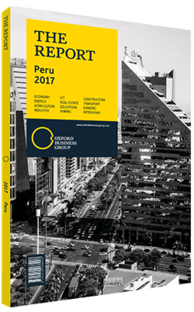Juan Pablo García Bayce, General Manager, Gerdau Siderperú: Interview

Interview: Juan Pablo García Bayce
How can greenfield projects enhance steel and iron production and consumption in Peru?
PABLO GARCÍA BAYCE: For some context, it’s important to note the negative effects of stagnation in government-led investments on the Peruvian steel and iron industry in recent years. The previous administration made the decision to control investments at the national and regional level, which was necessary in the context of an economic slowdown, but also negatively affected steel and iron consumption. This is an industry that had been growing at an average of 12% annually between 2003 and 2013. A decrease in the number of government infrastructure projects has limited industry growth to an annual rate of 1.7% in 2014, -5.8% in 2015 and -3.1% in 2016. However, the new government is demonstrating its commitment to bridging Peru’s estimated $70bn infrastructure gap, which will certainly create new opportunities for iron and steel producers.
What threats, if any, do imported products pose to local steel producers?
GARCÍA: The global economic crisis has led some steel-producing nations to export their products as a result of decreasing demand in their domestic markets. Years ago, Peru wisely chose to be an open economy, and due to the number and scale of infrastructure projects taking place, the entrance of foreign products to the domestic market was a natural consequence of the country’s development. As a result of Peru’s decision to open its market, industries were required to grow and adapt without government aid, which is something positive. However, in such a context it is the government’s role to give local firms reasonable time to adapt to the new reality and to tackle unfair competition. In this respect, the government has implemented anti-dumping measures against tubes imported from China to guard the local market against imported products that are being sold below market prices. This highlights the strength of Peruvian public institutions, although much more has to be done, given the number of products that are still coming from overseas at dumping prices. Having solid public institutions, a clear plan to develop large-scale projects and meet the country’s infrastructure and logistics needs, as well as available natural resources and cost-efficient and talented human capital, are all crucial to improving Peru’s global competitiveness. It is also key to have flexible labour laws, which are extremely rigid compared to the countries Peru competes with.
How feasible is it for Peru to become a regional smelting hub, and what is needed to achieve this?
GARCÍA: Peru has the ideal conditions to become a smelting hub in the region, and it should strive to achieve this goal. It has available gas and other sources of energy, rich mineral resources and the ideal location. However, the country needs to enhance its port capacity. Not only does it need more ports, but these ports must have greater depth. Furthermore, better road and railroad infrastructure would contribute significantly to lowering costs.
What must be done to guarantee improved longterm productivity in the industry?
GARCÍA: Rather than understand it as a decrease in productivity, one could argue that productivity levels have not yet reached a level that would make exports sufficiently competitive. However, it must be said that this is to be expected, given that this was a protectionist economy for many decades. Over recent years, Peru has showed that it is on the right path to improving productivity. In order to continue improving its competitiveness and productivity, it is crucial for the country to invest in education. Talented human capital is what sets productive nations apart. Furthermore, Peruvian companies and institutions also need to modernise management methods and move towards flatter structures in order to speed up and improve internal processes.
You have reached the limit of premium articles you can view for free.
Choose from the options below to purchase print or digital editions of our Reports. You can also purchase a website subscription giving you unlimited access to all of our Reports online for 12 months.
If you have already purchased this Report or have a website subscription, please login to continue.

